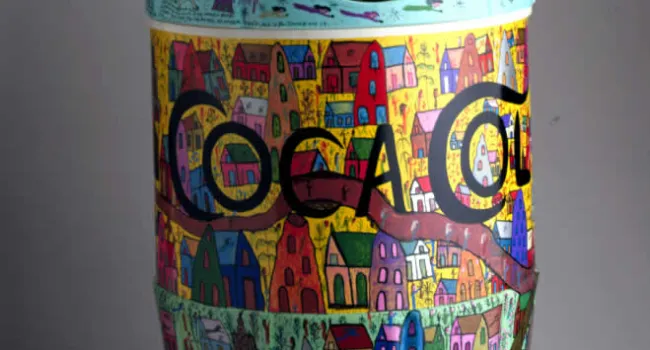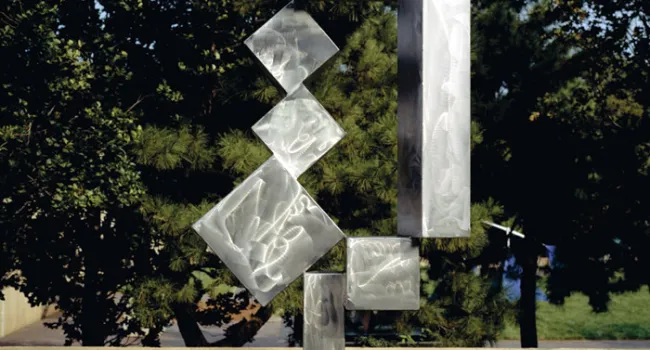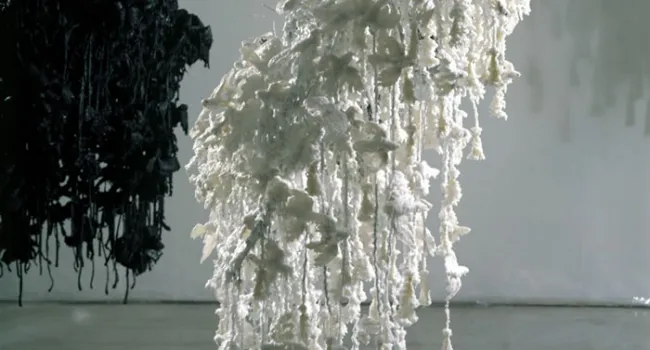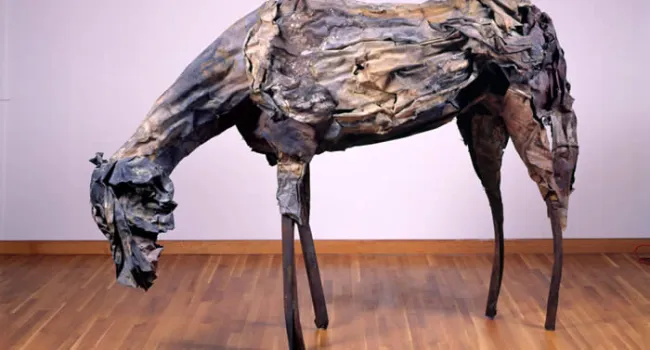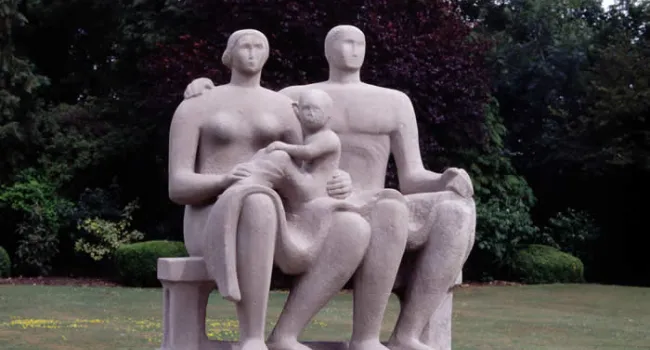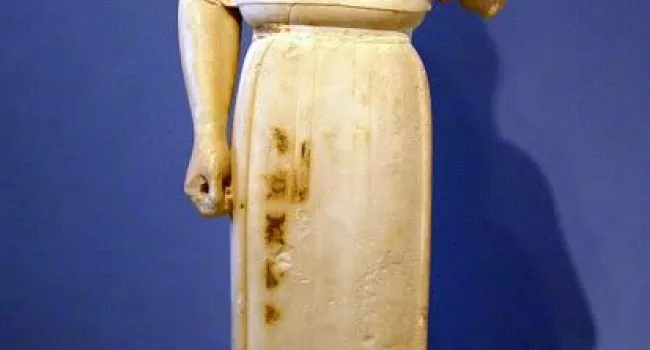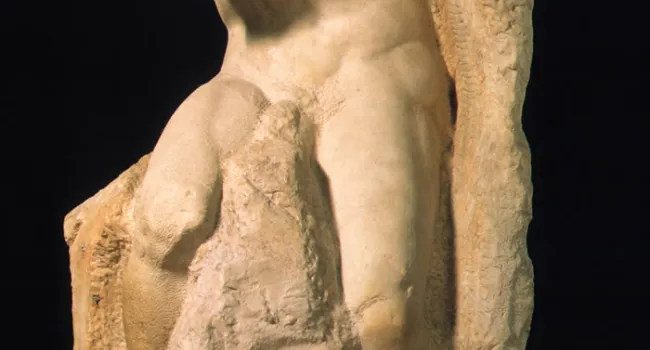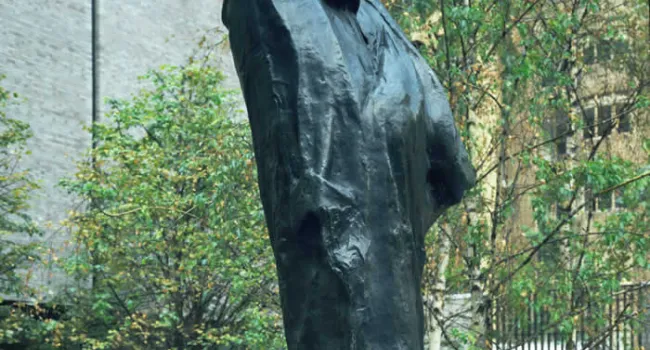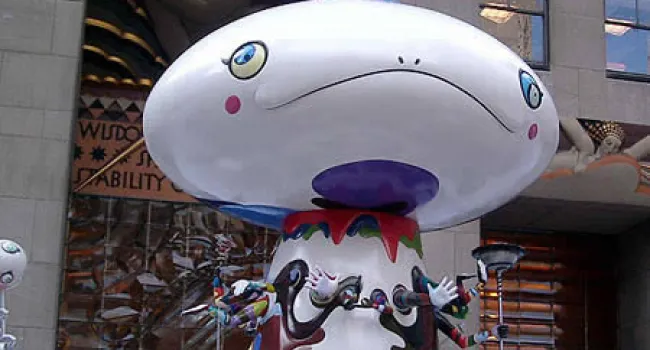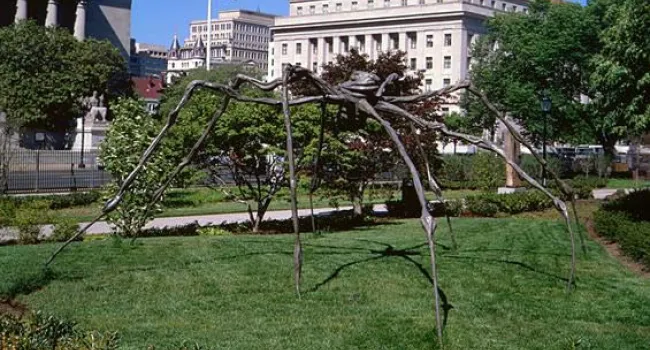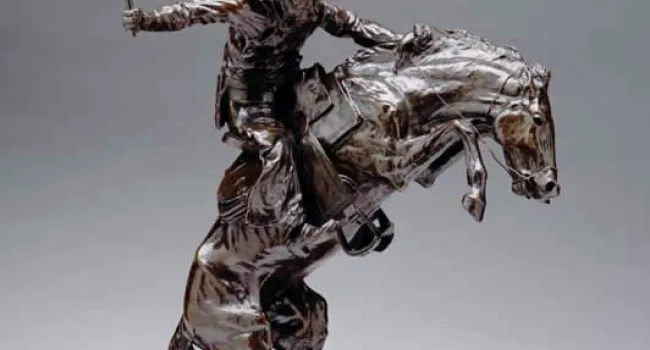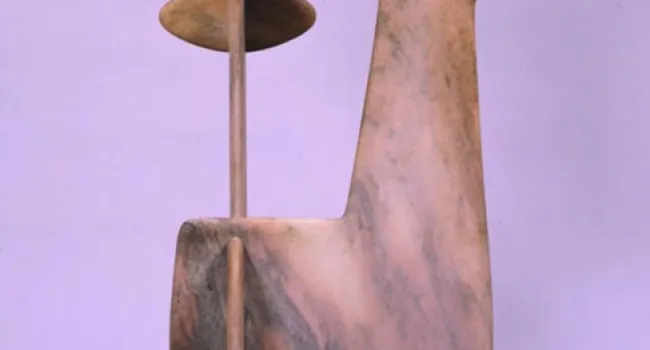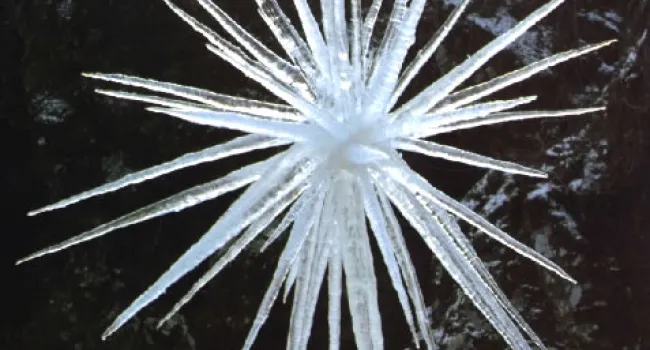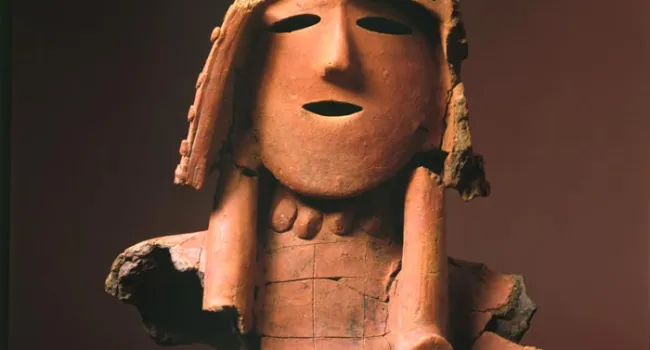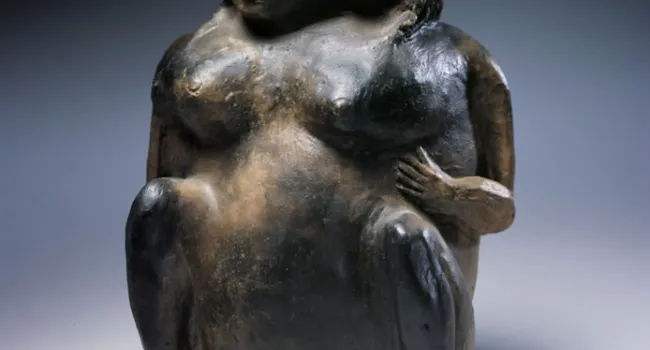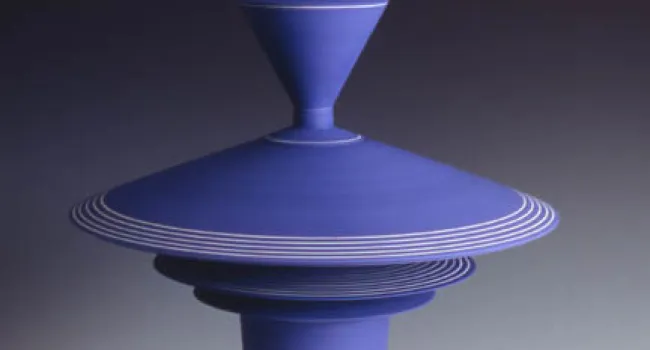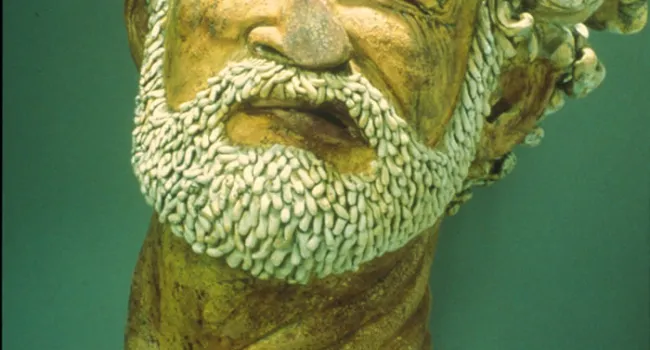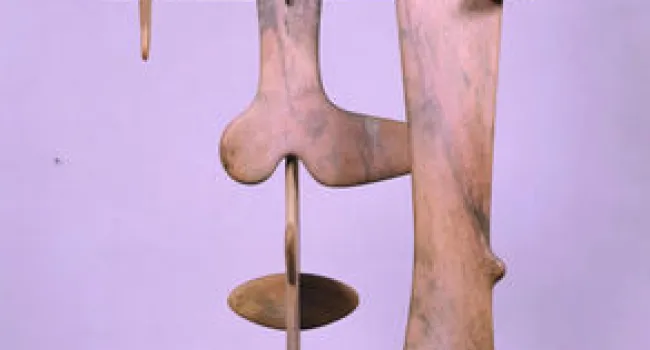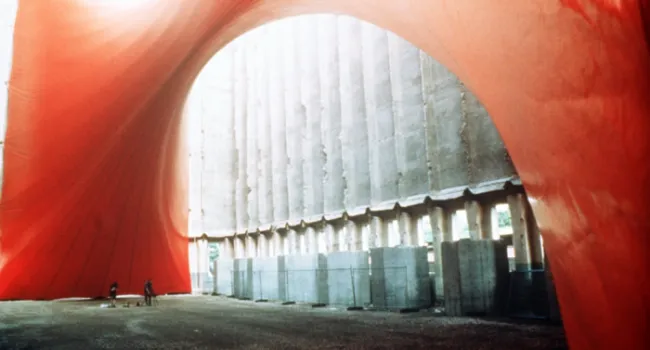
Isamu Noguchi
A Closer Look
Do you think this sculpture could be considered stylized? Do you notice a resemblance between it and another in our collection? Noguchi simplified the parts of the body and made them very smooth. Kouros is an excellent example of balance. The parts are held together without glue or nails, only notches, like a log cabin. Look at an animal and draw it using simple shapes. Cut these shapes out of cardboard and assemble them using only slits that you have cut into the shapes.
About the Sculpture
Noguchi’s Kouros is carved from pink marble and is over nine feet tall. Its name comes from the ancient Greek word for boy. The shapes in the sculpture are called "biomorphic" because they look like they could be bones or other body parts. Compare Kouros to the Peplos Kore. Probably ancient Greek sculpture inspired Noguchi. But he also said he got his ideas for this kind of sculpture from Japanese art and flower arrangements.
About the Artist
Isamu Noguchi was born in California to a Japanese father and an American mother, but he spent most of his childhood in Japan. He moved back to the United States when he was fourteen with his mother and sister, and began to study art. When he was twenty-two, Noguchi worked as a part-time studio assistant to the famous sculptor, Constantin Brancusi, who taught him how to carve simple, organic shapes in stone.
Write About It
- Make a list of what you see.
- How did the artist use the elements and principles of design?
- What do you think the sculpture means? How does it make you feel?
- Select two sculptures to compare & contrast.

